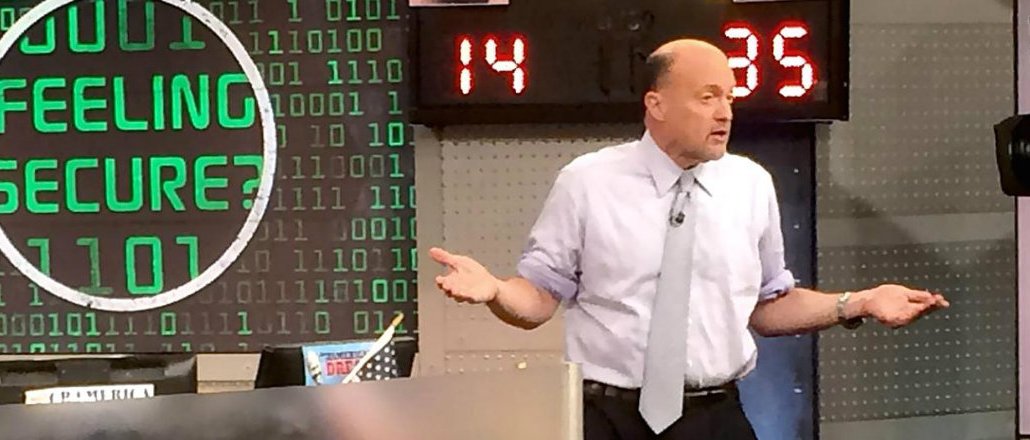Join us Dec. 1-3 in New Orleans for the Digiday Programmatic Marketing Summit

A 24-hour news network has no shortage of video it can repackage for the Web, but for CNBC, digital video increasingly means original content — though still starring plenty of its TV talent.
“Early on, a small percentage — maybe 10 percent — were original digital videos,” said Mike Senzon, executive producer for CNBC Digital Video. “I would say now it’s starting to become a 50-50 split.”
Altogether, CNBC’s digital arm publishes close to 200 videos a day and roughly 4,000 a month, according to a company spokesperson. These videos are available on CNBC.com and the network’s mobile and streaming TV apps, as well as across a wide variety of third-party distribution platforms including AOL, MSN, Hulu, Yahoo Finance, Facebook and YouTube.
Viewership is growing. According to comScore, CNBC.com alone reached 7.6 million unique desktop viewers in the U.S. in July, a 146 percent increase over the previous year. Across all owned-and-operated platforms, viewers have increased by 40 percent year-over-year, and partner video viewers have more than doubled (up 138 percent), the company added. On Facebook and YouTube, CNBC hit 14.3 million and 372,000 views, respectively, in July, per data from Tubular Labs.
Senzon credits the growth to a “unified newsroom” that isn’t divided along media and platform lines. “It’s not like digital video is a small team in the corner,” he said. “We are creating a way for traditional TV journalists to leverage their success by coming up with new ideas. I can name a number of our television executive producers who have pitched and created digital video franchises.”
One such example is “Retire Well,” an advice series starring CNBC’s senior personal finance correspondent Sharon Epperson, who shares tips and tricks for people concerned about saving up for their retirement. Another is “Speakeasy,” in which chief Washington correspondent John Harwood interviews presidential candidates and other political figures. Jim Cramer, perhaps CNBC’s top personality, is involved as well. Working with the “Mad Money” host and his executive producer, CNBC Digital developed “Cramer Remix,” which reformats clips from the TV series into a Web-friendly format — replete with large text and graphics.
The original content isn’t restricted to daily or weekly Web series, either. “When I joined two years ago, we decided to expand beyond our core markets and investing coverage,” said Jeff Nash, interim managing editor for CNBC Digital. “We still care about our core coverage area, obviously, but we know that there is a bigger audience out there that wants content on all things money.”
This has resulted in CNBC sending reporters out on the field to do “day-of” videos and even longer documentaries about relevant and trending news topics. For instance, during the most recent debt crisis in Greece, the network sent a video reporter and a digital reporter to do a street segment in the Astoria neighborhood of Queens, New York City, where there is a large Greek population. On the long-form side, CNBC is currently producing a documentary package about the current and future economic impact of the drought in California, which will premiere on Sept. 21.
Another way CNBC has scaled its video output is through a daily video series called “Bottom Line.” For the program, staffers from CNBC’s digital video, TV and tech-ops groups have come together to quickly produce and distribute short videos tied to the network’s markets coverage. CNBC Digital is producing 15-20 “Bottom Line” videos per day, said a company spokesperson. “Bottom Line allows us to quickly generate video for stories that might not have a video yet,” said Senzon, “and almost every reporter in the building weighs in.”
It all goes back to a “mandate” Senzon received when he joined the company in September 2014. “When you look at a large organization like CNBC, with an incredible bench of talent who have skills in specific areas, we really started to hone in on creating some interesting content that helps fuel those verticals,” he said.
Image via CNBC.com
More in Media

Ranking is out, visibility is in as publishers chip away at AI search optimization
In the AI era, measuring pageviews isn’t enough — publishers need a new metrics stack that tracks how they are cited in AI engines and ties it all to clicks and revenue.

How U.K. news group Reach is diversifying traffic sources amid zero-click threat
Reach is diversifying beyond Google by leaning on news aggregators and monetizing Facebook engagement to offset declining search traffic.

How Forbes is using ChatGPT referral data to create audience cohorts
Semrush and Similarweb provide information, including the prompts that led an AI platform user to click through to a publisher’s site, that Forbes is able to use to learn more about its AI-referred audience’s interests.





